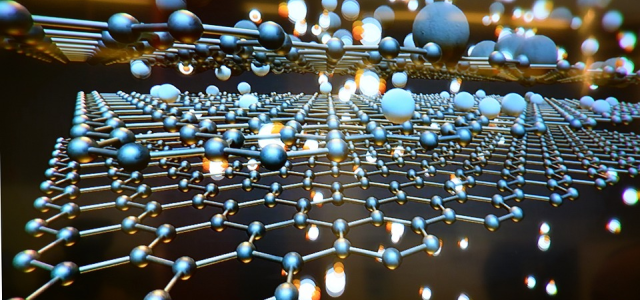Since its discovery in 2004, and the subsequent Nobel Prize in 2010, graphene has been one of this generation’s most talked-about advances in the material sciences. It has been touted as a ‘cure all’ for problems in nearly every technological sector, and (perhaps remarkably) research shows that’s not entirely exaggeration.
Looking at how the patent landscape develops around such an exciting breakthrough is a fascinating way to analyse how IP impacts academia and industry. With graphene we have a rare opportunity to do so in the ‘digital age’, and to observe in real-time as trends develop.
While the underlying technology is years old, there is still constant innovation relating to graphene, sometimes with the goal of finding new opportunities for its use, sometimes with the goal of making it yet more suited to existing industrial applications.
Last year, we decided that the time was right to look at how this impacts patent publication trends for graphene. Initially, we looked at four key areas: composites, electronics, construction and energy storage. These are fields where the benefits of graphene are well known and well developed. Looking at how many patent publications are made related to graphene in these fields can give us insight into just how much work is being done to harness the power of graphene – and give us an idea of what the future might hold for other fields or other 2D materials.
In our report we mined patent databases for information going back to 2011 and sought commentary from leading industry figures as well as our own internal experts.
What we found in the data was both unsurprising and unexpected, in equal measure.
Coming into the project, I predicted a gradual increase in the number of patent publications that mentioned graphene, across each of the fields we looked at. That was partly based on my optimism that innovators would be quick to grasp and seek to exploit the potential of graphene; and partly based on my cynicism about patent attorneys and their drafting strategies!
However, I was unprepared for just how rapid the increase would be. For example, between 2011 and 2018 the number of patent families in the construction field for which there was a publication increased more than 30-fold; the increase for the other areas was a more modest yet still remarkable 5 to 10-fold.
Following such incredible rises, a levelling off would not have been surprising – but what we actually observed, which was a sharp drop in numbers (towards 30%) from 2019 to 2021, was a bit of a shock.
Several theories can be advanced about this drop-off: it is impossible to know the ‘correct’ answer, but I imagine that a mixture of factors underly it.
To start with, one might easily point the finger at the COVID-19 pandemic, which has impacted and continues to impact so many areas of our society. Because of the 18-month lag in publication of patent applications after filing, the observed drop-off in 2021 would be indicative of a drop-off in patent filings between late-2019 and mid-2020. That was, for many countries, the start of significant lifestyle changes prompted by COVID-19, which might well have impacted innovation. Economic considerations prompted by COVID-19 might also have led to more conservative patent filings strategies being adopted.
Another theory is that, as graphene moves out of academia and into industry, the shape of patent filing strategies for graphene innovators is changing. Maybe as the technology matures there is less focus on a ‘scattergun’ approach, and a bit more focus; maybe the prior art landscape has filled up to the extent that exploitable spaces have narrowed; maybe innovators (particularly in industry) are becoming a bit less willing to publish their in-house expertise.
Something else I’ve heard people suggest is that, simply, we have passed ‘peak graphene’ – it’s just not as trendy as it once was. Are innovators moving on from graphene, maybe towards other 2D materials? Are industrial researchers not finding the benefits they’d hoped for, and turning away?
It is hard to know, but easy to speculate, how the balance between these and other factors lies. The data over the next few years might give us more insight, as COVID-19 becomes more distant.
All that can be said for sure is that graphene innovation is not going away – quite the opposite. There is so much we still do not know about this material that a constant stream of patentable inventions is certain. How much of that will be industrially applicable and exploited? Ask me again in another 10 years…
Written by Matthew Smith, Partner, Patent Attorney at Mewburn Ellis











